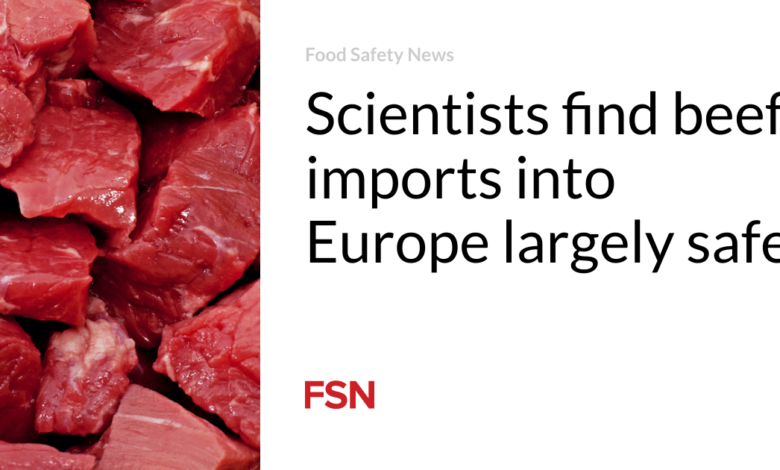Scientists find beef imports into Europe largely safe

The presence of foodborne pathogens in raw beef imported into the European Union is low, according to a study.
Microbiological quality of 100 raw beef samples sent to the EU was investigated. Samples of beef imported from November 2021 to May 2022 were collected at the Border Control Post of Hamburg Harbor in Germany. In total, 53 samples came from Brazil, 33 from Argentina, 12 from Uruguay, and two from Paraguay.
In 2021, there were 283,729 tons of beef imported into the EU, representing an increase of 26 percent compared to 2020. The main suppliers were Brazil, Uruguay, and Argentina.
Beef is occasionally consumed raw or not fully heated. This means the risk of ingesting viable pathogens either directly or indirectly through cross-contamination increases, according to the study published in the journal Food Control.
Highlighted findings
Samples were quantitatively analyzed for aerobic mesophilic colony counts (ACC), counts of Enterobacteriaceae, E. coli, Listeria monocytogenes, coagulase-positive staphylococci and qualitatively for Listeria monocytogenes and Salmonella. Samples were also screened for extended-spectrum Beta-lactamase (ESBL)-producing Enterobacteriaceae and Shiga toxin-producing E. coli (STEC).
Microbiological results were evaluated according to guidance and critical values defined by the German Society for Hygiene and Microbiology (DGHM).
An E. coli prevalence of 3 percent was detected, with one sample exceeding the critical value of the German Society for Hygiene and Microbiology. Coagulase-positive staphylococci were found in one sample, but at a level below the DGHM guidance value.
In three samples, Listeria monocytogenes was detected quantitatively, but none above the critical value. Enterobacteriaceae were present in 83 percent of samples with 40 percent surpassing the critical value.
E. coli was detected in two samples from Brazil and one from Argentina. Of these, one sample from Brazil passed the critical value defined by DGHM. The Coagulase-positive staphylococci positive sample was from Argentina.
In three samples from Argentina, and one each from Uruguay and Paraguay, Listeria monocytogenes was detected. No samples were positive for Salmonella.
Import of different STEC types
Two samples from Argentina were positive for STEC. Detected isolates were subjected to whole genome sequencing. Both harbored stx1 and stx2. The two STEC isolates did not belong to the major serogroups: one was serotype O178:H7 and the other B17:H19. There are no reports on the detection of B17 STEC in raw beef to date.
“An uncommon STEC serotype was detected indicating that imported raw beef constitutes a potential source for the dissemination of STEC serotypes that differ from those commonly reported in the EU,” said researchers.
High values of ACC in raw meat, combined with high detection frequencies of other hygienic indicator bacteria such as Enterobacteriaceae, indicating potential hygiene deficiencies.
“Our findings highlight the importance of adhering to hygienic conditions throughout the meat production and transport chain in order to ensure a hygienically sound product even after long transportation and storage times,” said researchers.
(To sign up for a free subscription to Food Safety News, click here.)



